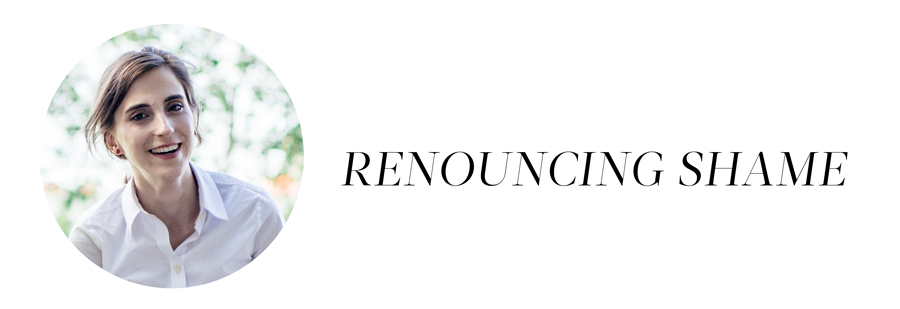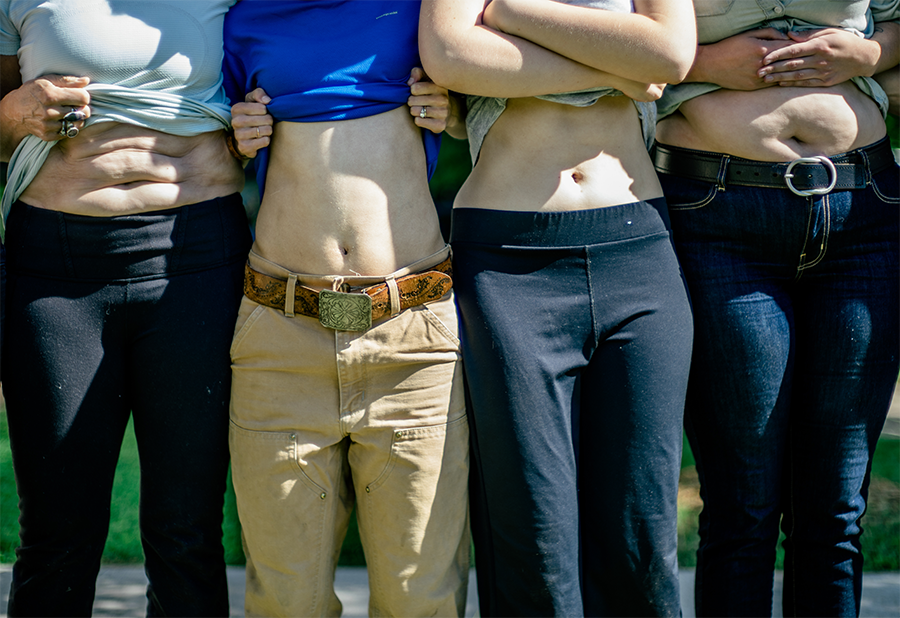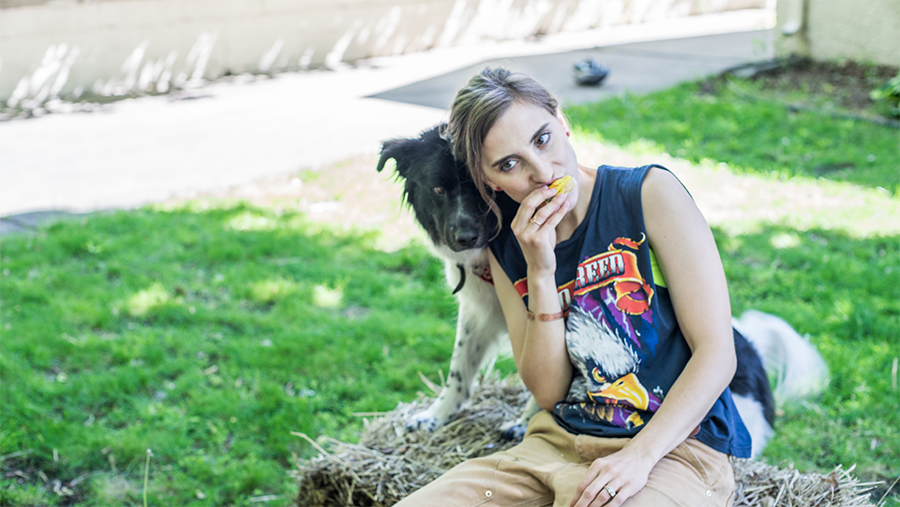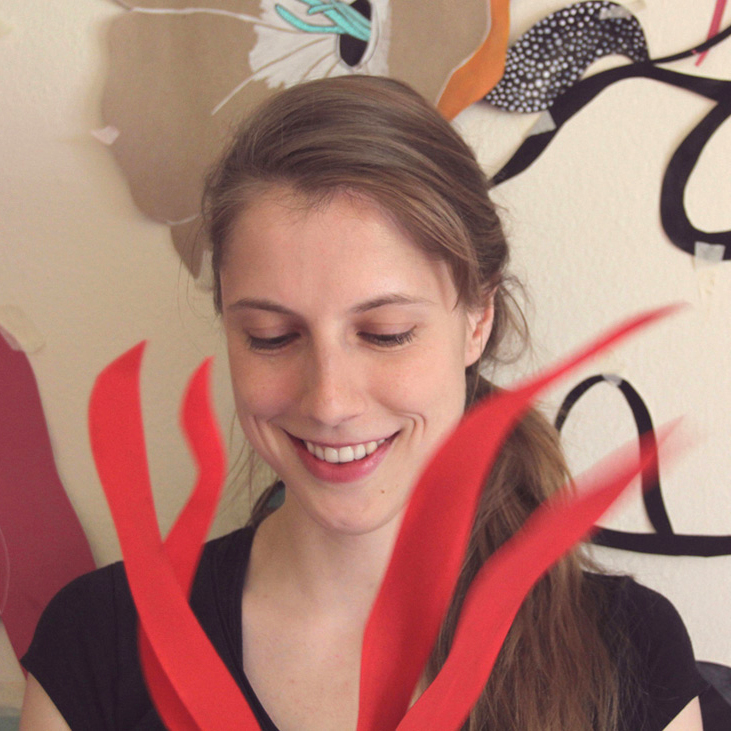
STORY BY VICTORIA BLANCO + ART BY LUISA RIVERA

Jennifer Almanza was nineteen when her friend, a high school classmate, went into labor. In the weeks before her friend gave birth, Jennifer gathered herbs and roots—jamaica, alfalfa, raspberry leaf, stinging nettle, dandelion root—learned from wise women in her community and from herb books. Jennifer brewed teas to help prepare the womb for birth; she heated comfrey root for a perineal compress. When her friend called to say that the labor pains were beginning, Jennifer packed into her trunk a Crock-Pot filled with the aromatic herbs that have long helped laboring women ease their anxiety and birth peacefully.

ver the years, Jennifer’s reputation as a calm and helpful birth support spread among her friends expecting babies. Jennifer didn’t know at the time she was doing doula work; she was simply following her intuition. It wasn’t until a certified doula assisted her own birth that Jennifer understood she could make a living helping women achieve empowering births.
Working as a doula throughout her 20s, Jennifer saw firsthand the ways inequality affect women’s birthing experiences and outcomes. At one birth, she witnessed a standoff between Somali parents-to-be and a white obstetrician. The obstetrician recommended a C-section; the Somali parents refused. The parents agreed to the C-section only when the woman’s labor failed to progress and the baby’s life was in immediate danger. Jennifer has witnessed many similar interactions between parents of color and their white health providers, and believes a history of violence and a cultural gap all too often breed racism and mistrust. The white obstetrician became angry and insistent with the Somali couple; the Somali couple grew agitated and even more resistant to their doctor’s recommendations. “It’s the fear, because communities of color are afraid that we’re going to do to them what we’ve done to every group of color in this country: sterilize them, limit their reproductive capacity.” Jennifer believes providers need to strive to identify with their patients before they can improve trust and communication. But because violent history is so difficult to transcend, Jennifer also thinks that an influx of people of color in the medical profession will help improve care.



he tragic result of this violent history is the death of black and brown babies at twice the rate of white babies. The factors behind the statistics are varied and numerous, but Jennifer believes the cultural gap plays a vital role in determining whether a pregnant woman obtains the care she needs. “Fear. I think fear is the biggest driver of tension,” she says of patients and providers who fail to connect on a personal level and therefore can’t communicate their thoughts and expectations about pregnancy and birth. “At the end of the day, I think it comes down to being able to be seen and heard.” Jennifer soon stopped charging for her doula services, choosing instead to support the most vulnerable pregnant women who can’t afford the standard doula rate of about $700. But working as a pro-bono doula meant that Jennifer couldn’t support her own family—a realization that later led her to lobby for Medicaid-insured doula coverage, so that women have greater access to doula services and doulas receive payment. In the meantime, Jennifer saw nursing as an opportunity both to earn a viable income and continue advocating for women’s healthcare. She trained to become a nurse and continued providing free doula services on the side, working doubly hard to ensure healthy births for more women of color.
Jennifer finds great value in the Western medicine she learned in nursing school, but the profession’s tendency to devalue traditional medicine and birthing practices always frustrated her. She believes women should be encouraged and supported in choosing their own culture in birthing. Even though Minneapolis is diverse in cultures and approaches to birthing, the medical profession has tended to treat pregnancies and deliveries from a standardized Western viewpoint. Thanks in part to the lobbying efforts of Jennifer and other doulas and midwives, this approach is slowly changing. In her practice, Jennifer has observed providers shifting toward prioritizing mindfulness. Today, providers are beginning to advise patients on the benefits of mindfulness meditation, claiming that it can lower blood pressure and make insulin more effective. She laughs at the irony: mindful presence in the birthing room is one of the most important lessons she learned from women in her birthing tradition.



en years after she obtained her Registered Nurse degree, Jennifer won a Bush Fellowship to pay for her training as a midwife. “Culture is one of the deep drivers that has pushed me towards this route. People who are bicultural and who find deep value in our indigenous roots don’t have anywhere to find that when they’re looking to access that care for themselves,” she says, referring to women’s birthing traditions. Jennifer wants women to have the best of all worlds: the wisdom of their tradition and the accessibility of Western medicine and caregivers who are paid a living wage. As a Latina nurse-midwife, Jennifer believes she will finally fulfill her calling to help more women of color achieve the mother-centered births they want.
In the Twin Cities, nurse-midwives and doulas are appealing options for pregnant women looking for a more holistic approach to birthing. But lack of insurance coverage and high cost of care remain a major barrier in making these services accessible to low-income women. One of Jennifer’s passions is lobbying for policy changes to extend coverage to doulas and birthing centers located outside of hospitals, such as Roots in North Minneapolis and Ahavah BirthWorks. Insurance coverage will ensure not only that more patients have access to these services, but that nurse-midwives and doulas earn a livable income through their work. At this time, doulas and nurse-midwives serving communities in dire need often don’t receive compensation—an injustice that Jennifer seeks to resolve through lobbying and campaigning for full medical coverage. This structural change will open opportunities for more low-income women to achieve mother-centered births, as well as help make doula and midwife careers viable options for more people, especially people of color. “What is needed is functional legislation and coherent paths to reimbursement for community-based doulas, midwives, and birth centers. Decrease the structural barriers to making this a viable career for people of color, and solutions to disparities will come.”
For Jennifer, there are many layers to her drive to improve birthing for every mother. She believes birth is an individual experience, filled with ritual and ceremony for many women. She sees the provider’s role, no matter the title, as protecting a sacred space for the mother to birth: “These are the last great ceremonies—birth and death.” It is with this understanding and compassion that Jennifer respects the specific wishes of each birthing woman. For one woman, she makes sure copal, a tree resin from Mexico, burns throughout her labor. For many of the Hmong women she serves, she ensures no one tries to remove the red prayer ties around their waists.


Contributors




















